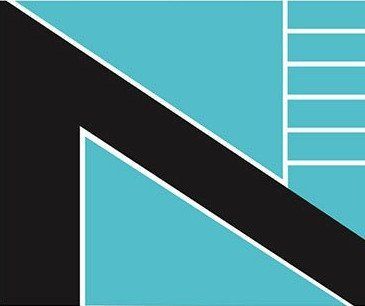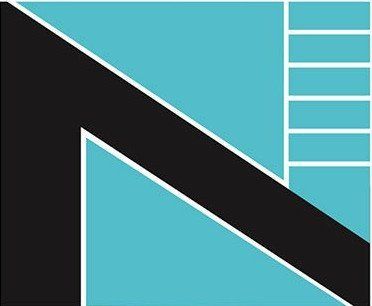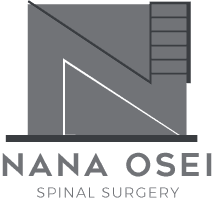Spinal Surgeon and Researcher Expert In Back, Leg, Neck and Arm Pain
Back & Leg Disorders
Common Causes
Non-specific back pain, ligament injury, tendon muscle strains, disc prolapses, and spondylosis are all common. MRI studies demonstrate that the majority of back pain does not have a main source. It is clinically referred to by many names including lumbago, muscle strain or mechanical back pain. Back pain is frequently seen when the soft tissues are put under excessive pressure, and on occasion is severe enough that patients are taken to Accident and Emergency.
Common Symptoms
These include pain, weakness, altered sensation, deformity.
Red Flags: These warrant medical investigation and can include weight loss, trauma, fever, neurological decline, balance, incontinence, sleep disturbance, upper back pain, under 20, Over 55.
Common Conditions
Lumbar Disorders: This is the collective term for conditions causing back and leg pain including sciatica, disc prolapses, arthritis (spondylosis), osteoporotic fractures, stenosis, spondylolisthesis.
What is it?
This is pain down the leg, which can be anywhere from the hip and buttock to the foot. It is generally caused by a trapped nerve which may be from a disc prolapse or spinal canal narrowing also known as stenosis.
How is it treated?
Physiotherapy, Analgesia, and Injection Treatments may be needed. In severe cases discectomy/decompression where an anatomical cause of pain is found.
Disc Prolapse
What is it?
The intervertebral disc is a shock absorber between the spinal bones. It has a soft jelly like inner core surrounded by a ring of fibre. When the fibre tears, the jelly can come into contact with a spinal nerve causing leg and back pain. This is where the shock absorber of the spine the disc moves out of position and touches a nerve.
How is it treated?
The leg pain associated with a prolapsed disc is called sciatica. With adequate pain relief and physio most prolapses will settle within a few weeks. There are occasions when the pain continues for many months. Surgery is indicated if the pain becomes intolerable and if the benefits for surgery are felt to outweigh the risks.
Physiotherapy, analgesia, and injection treatments may be needed. The primary surgical procedure is called a microdiscetomy, meaning that the part of the disc that is touching the nerve is removed through a small incision. More complex treatments are needed in certain cases.
Arthritis (Spondylosis)
What is it?
Arthritis is degeneration of the joints. It can be associated with deformities of the lower back. The most common type of arthritis is osteoarthritis which is caused by wear and tear. Rheumatoid arthritis is less common and caused by inflammation.
How is it treated?
Medication for Rheumatoid Arthritis, Physiotherapy, Analgesia, Injection Treatments. In severe cases cervical fusion (ACDF) & Disc Replacement may be needed.
Osteoporotic Fractures
What is it?
Bones that are osteoporotic are weak and break from things as trivial as bending forwards or even sneezing. The bones of the spine are rectangular. In osteoporosis they tend to collapse down at the front and they become triangular in shape.
How is it treated?
Collapsed bone under the right conditions can be reinforced, stretched and also blown up like a balloon. Options for osteoporotic fractures include bracing, injecting cement to reinforce the bone known as vertebroplasty or to expand the bone and inject cement in the void kyphoplasty.
Spinal Stenosis
What is it?
This is narrowing of the spinal canal compressing the nerves.
How is it treated?
Most conditions will be treated conservatively. If there is significant compression affecting walking, then decompression is indicated.
Spondylolisthesis
What is it?
This is a spinal deformity, where one vertebra moves forward on the other. This can cause back pain and sciatica. The most common causes are stress fractures at the back of the spine typically at L5/S1 or by the development of abnormal mechanics most typically part of the aging process at L4/5.
Back operations
Lumbar Discectomy/decompression:
Suitable for:
Disc Problems, Spinal Stenosis
Aim:
This operation is`` designed to remove part of the disc (or excess bone) that is touching a nerve causing leg and back pain. I do this operation with an operating microscope. A small incision is made in the back over the disc. Fine microsurgical instruments are used to remove the disc material.
Recovery Time:
Typically, you will go home the following day, and return to work at 6 weeks, possibly earlier depending on the nature of your work.
Interspinous Devices:
Suitable for:
Disc problems, Stenosis. These devices are a good option for patients who require more complex disc surgery but wish to minimize their spinal intervention without limiting future revision options or are medically less fit or elderly.
Aim:
This operation is designed to remove pressure from nerves without disturbing the nerve roots that are causing back and leg pain. This technique can be performed using minimally invasive techniques (MIS) or as part of a fusion procedure.
Recovery Time:
You will leave hospital the day after the procedure and can return to work rapidly. I urge patients to use the full 6 weeks to recovery unless you have a strong desire to return to work early.
Lumbar Spinal Fusions:
Suitable for:
Back pain, Leg Pain & Deformity, Complex disc problems and previous surgery
Aim:
These operations are designed to join 2 or more spinal bones together to improve back and leg pain or to correct a deformity. A metal scaffold (screws and rods) are put into the bones of the spine using small incisions. Bone is encouraged to grow using bone promoting agents, and grafts. This metal scaffold is known as spinal instrumentation.
I consider fusion surgery a last resort, and the majority of my surgery is non-fusion surgery. Fusions can be performed for back and leg pain. You will see abbreviations such as PLIF (Posterior Lumbar Interbody Fusion), TLIF (Transforaminal Lumbar Interbody Fusion). The abbreviations tell you the direction the surgeon is approaching the spine. My most common direction is from the back. If there has been previous surgery, it may be necessary to approach the spine from the front and this is called an ALIF (Anterior Lumbar Interbody Fusion). There are other routes to the spine such as from the side these are less commonly needed.
Deformity: If the deformity is large, a fusion may need to span more than 3 bones and is called a long Segment fusion. If the deformity is small the fusion can span 2 bones and is known as a short segment fusion.
Recovery Time:
you will leave hospital the following day or two and can return to work in 6 weeks. The spine may need several months for the fusion process to be completed.
MRIS
Understanding your scans
The MRI report is written to convey to other doctors what the radiologist has seen, without the radiologist having seen you. Common terms that are encountered are
“Disc Diseases” - “Bulges, Extrusions, Herniations, Prolapses, Protrusions, Slips, Dehydration, Dessication, Degeneration”.
Joint Diseases “Facet disease, hypertrophy”.
Bone problems “fractures, marrow changes”.
Ultimately MRI interpretation requires a comprehensive history and examination by a specialist or generalist with a special interest who has experience managing common spinal conditions. If your pain has persisted for 6 weeks or you have red flags then a visit to your doctor is indicated to provide specific advice.
If you have had a scan organized by another doctor before you see me, please call my office on 01727 863447 so that adequate provision is made before your consultation to retrieve the images if necessary and allocate time to review these.
The Common MRI Finding
What does a disc prolapse look like?
Disc prolapses are one of the most common findings. The pictures below are of an MRI scan showing a prolapsed disc. The dark oval structure in the centre is a disc and the bulge coming off it is the “prolapsed disc”, protruding into the spinal canal on the cross- section view. In the lower image the disc prolapse can be seen as a circle behind the spinal bones. When it touches a nerve you will feel pain radiating from your back down the leg and this is known as sciatica.
Neck & Arm Disorders
Neck Conditions
Common Causes
Non-specific neck pain, ligament injury, tendon muscle strains, disc prolapses, and spondylosis are all common. MRI studies demonstrate that the majority of neck pain does not have a main source. It is clinically referred to by many names including muscle strain. Neck pain is frequently seen when the soft tissues are put under excessive pressure, and on occasion is severe enough that patients are taken to Accident and Emergency.
Common Symptoms
These include pain, weakness, altered sensation, deformity.
Red Flags: These warrant medical investigation and can include weight loss, trauma, fever, neurological decline, balance, incontinence, sleep disturbance, upper back pain, under 20, Over 55.
Common Conditions
Cervical Disorders: This is the collective term for conditions causing neck and arm pain including brachalgia, disc prolapses, arthritis (spondylosis), stenosis, spondylolisthesis and retrolisthesis.
Whiplash
What is it?
Whiplash is a syndrome (collection of symptoms) that arises typically in a rear shunt road traffic accident when the head is seen to “whip” backwards whilst the rest of the skeleton is shunted forwards. Neck pain is the classical symptom, but common associated physical complaints include headaches and lower back pain, and psychological complaints include nightmares and flashbacks.
How is it treated?
Most cases will be self-limiting within a few days to several weeks. It is critical to start movement therapies early, with regular physio and analgesia. The physical aspects will respond faster if the psychological aspects of the accident are addressed together and robustly.
Radiculopathy (“Sciatica” of the arm)
What is it?
Radiculopathy is pain arising from a trapped nerve in the neck for whatever cause. It typically occurs because of a disc prolapse or stenosis.
How is it treated?
Most cases will be self-limiting within a few days to several weeks. Regular physio and analgesia.
Disc Prolapse
What is it?
This is where the shock absorber of the spine (the disc) moves out of position and touches a nerve.
How is it treated?
Physiotherapy, Analgesia, Injection Treatments. In severe cases discectomy/decompression.
Arthritis
What is it?
Arthritis is severe wear and tear in the neck. It can be associated with deformities of the neck. The most common is osteoarthritis. It can occur in rheumatoid arthritis. Before the latest generation of drugs to modify rheumatoid disease the neck was severely affected.
How is it treated?
Physiotherapy, Analgesia, Injection Treatments. In severe cases cervical fusion & Disc Replacement are needed.
Myelopathy
What is it?
This is compression of the spinal cord. It is a spinal emergency causing pain and weakness.
How is it treated?
he pressure from the spinal cord must be removed. High dose steroids are sometimes needed to chemically reduce inflammation around the cord to preserve its function.
Neck Operations
Anterior Cervical Decompression & Fusion (ACDF)
Suitable for:
Neck & Arm Pain, Weakness, Balance Problems
Aim:
This operation is designed to remove pressure from the nerves and spinal cord in the neck that are causing pain and weakness. I perform this surgery using the operating microscope. The aim is to remove pressure from a trapped nerve and cleanout a damaged disc. I then place bone graft in a special cage between the spinal bones to replace the damaged disc to do the fusion.
Recovery Time:
You will leave hospital the following day or two and can return to work in 2 weeks. Pain relief can be immediate following the surgery.
Should I have surgery:
ACDF is an excellent operation to release pressure from a trapped nerve in the neck. If the pain is predominantly in the neck with little arm pain alternatives to surgery should be considered first.
Cervical Disc Replacements
Suitable for:
Neck & Arm Pain, and where a strong desire to preserve movement is needed such as having previous fusion surgery.
Aim:
This operation is designed to remove a damaged disc and replace with an artificial disc. Fusion surgery still remains the gold standard
Recovery Time:
You will leave hospital the following day or two and can return to work in 2 weeks. Pain relief can be immediate following surgery.
Should I have surgery:
Cervical Disc Replacements are showing promise but have not been shown to be better than ACDF. They can be considered where there is a strong desire to maintain movement.
Common MRI Findings
The neck does not take us much load as the lower back. I commonly see wear and tear affecting the neck, and disc protrusions and prolapses. I also see reports where the spinal bones are narrowing the spinal canal causing stenosis. Occasionally the spinal cord is compromised either by being frankly compressed or traumatized.
Medicolegal
Mr Osei writes in excess of 600 reports a year and accepts instructions from Solicitors and Medicolegal Reporting Agencies for both Claimants, Defendants and as Joint Expert. He has a keen interest in the medicolegal aspects of trauma and orthopaedics with a special interest in all spine conditions. He sees his role as an expert witness to educate and inform both parties, as well as the court and to guide the rehabilitation of injured parties.
He undertakes work in low velocity soft tissue injury, personal injury and occupational related injury to the musculoskeletal system and more complex work pertaining to serious injury in trauma, orthopaedics and the spine. Pre-existing injury; awkward lifting; trips and falls; repetitive movements; incorrect lifting; cold environments; prolonged standing; static postures are all risk factors for back problems.
Mr Osei systematically approaches the more complex cases where an element of negligence breaks the chain of causation and assists in both fast track and multi-track reports.
His opinion is based on diligent appraisal of the facts and seeks to address causation, quantum and prognosis. He is an Associate of the Faculty of Expert Witnesses ; has received Bond Solon Training in Excellence in Report Writing; advanced training in Joint Statement Reporting (Conference with Counsel; Cross Examination Theory and Practice); is MedCo accredited and has received training in the Civil Procedure Rules. He provides remote video consultations that meet the requirements of MedCo in the coronavirus pandemic. His terms and conditions of engagement and sample reports are available on request. For more information call 01727 863447.
Sacrum & Coccyx Disorders
Sacroiliac joint Dysfunction
What is it?
The sacroiliac joint distributes forces away from the spine. When it dysfunctions it can cause pain in the back, pelvis or buttock.
Causes
Trauma, post pregnancy, hormonal changes, idiopathic (no clear cause)”
How is it treated?
Rehabilitation with physical therapy. Injection therapy is indicated and radiofrequency treatment. More invasive options are sometimes required.
Coccydynia
What is it?
The coccyx may be injured after a direct fall. Due to hormonal changes with in pregnancy and labour the coccyx may be pushed out of alignment.
Causes
Trauma, post pregnancy, hormonal changes, idiopathic (no clear cause)”
How is it treated?
The coccyx may need to be examined under anaesthesia, moved into a better position and then calmed down with injections to the painful area. Occasionally the pain requires surgical excision.
Angulation of the coccyx, bony spurs, subluxations, and fusion or high signal change at the sacroiliac joints are MRI findings that I see with these conditions.
Pain Management COMMON SPINAL INJECTIONS
STEROIDS
Suitable for:
Leg, Arm, Neck and back pain
What is injected into the spine?
The common drugs injected into the spine are steroids (cortisone), local anaesthetics, Normal Saline (Salt solution), and contrast agents.
Where are the drugs injected?
The common sites injected are the caudal epidural space (near the tailbone), the joints of the spine (facet joints), trapped nerves (nerve roots), and nerves supplying painful joints (medial Branches).
Do they work?
Yes. I perform spine injections to fine tune surgical decision making; as part of a pain management program; to break pain cycles and as combinations. They are a conservative and effective means of controlling pain.
Contrast drugs are injected. They are dyes and let me outline the path of nerves to improve the accuracy of placing the medication. There are many types of steroids, depending on the size of the drug particles used will affect how the drugs are released and the effect on your pain.
How long do they last?
It is difficult to predict the length of the effect for any one individual. An idea will be gained from your clinical findings and current pain levels. The primary aim is to bring the pain to manageable levels, to enhance rehabilitation in the short to medium term. There are patients who have longer lasting effects.
How do they work?
The drugs act as powerful pain killers through anti-inflammatory and immunosuppressive effects.
Risks:
Spinal injections are a safe procedure
Recovery:
These are daycase procedures. Return to work is possible the following day. If a sick certificate is needed I will provide 7 days.
RADIOFREQUENCY
Suitable for:
back pain
What is injected in to the spine?
Special needles are placed close to the painful joints and radiowaves delivered. The heating effect causes a gap in the nerves removing the painful sensations.
Where are the drugs injected?
Local anaesthetic is injected into the needles to reduce pain.
Does it work?
Yes. There is research that suggests that the odds of radiofrequency working is best when preceded by a diagnostic local anaesthetic block. In the NHS the guidelines are for this block to be done first and many insurance companies will not cover the procedure unless a block has been done first. Radiofrequency whilst a low risk procedure compared to surgery still has risk.
Risks:
Radiofrequency Rhizotomies: All the risks of steroids and specifically nerve regeneration and an increased risk of nerve damage.
Recovery:
These are daycase procedures. Return to work is possible the following day. If a sick certificate is needed I will provide 7 days.
RECENT DEVELOPMENTS
Percutaneous Rhizolysis
Suitable for:
Back pain
What is injected in to the spine?
Special heat probes are surgically placed within the joint membrane and radiowaves delivered. This technique is intended to provide the benefits of radiofrequency with decreased risk of regeneration.
Does it Work?
This surgery is pioneering work, the early results from the US are encouraging. The procedure is recognized by the major insurance companies. I consider it experimental, it is still in early stages in the UK.
Risks:
The risks would appear to be significantly reduced compared to fusion surgery.
Recovery:
2 weeks- 6 weeks.
GENERAL CONSIDERATIONS FOR SPINE INJECTIONS
Do I need Injections?
Injections are elective procedures designed to help diagnose and treat your pain. The risks are low compared to surgery. You will need to satisfy yourself that you have exhausted all conservative options. Your physio, osteopath or chiropractor will be able to advise if they have reached the limits of their therapies.
Preparation for spine injections?
If you are on anticoagulants you may need to stop these and have special injections to provide anticoagulation in the run up to surgery.
What are the risks?
Spine injections are routine and safe the risks are low. They include pain, infection, bleeding, failure to resolve, bladder and bowel problems, epidural effect (i.e weakness/altered sensation), dural leak and nerve irritation.



